Abstract Odds ratios (OR) are commonly reported in the medical literature as the measure of association between exposure and outcome However, it is relative risk that people more intuitively understand as a measure of association Relative risk can be directly determined in a cohort study by calculating a risk ratio (RR) Relative risks and odds ratios are widely reported in the medical literature, but can be very difficult to understand We sought to further clarify these important indices Methods We illustrated both relative risks and odds ratios using bar charts, then looked at the types of study for which each statistic is suitedOdds Ratio, Hazard Ratio and Relative Risk Janez Stare1 Delphine MaucortBoulch2 Abstract Odds ratio (OR) is a statistic commonly encountered in professional or scientific medical literature Most readers perceive it as relative risk (RR), although most of them do not know why that would be true But since such perception is mostly

Mnemonics For Usmle Step 1 Pdf Behavioral Science Case Control Or Is In Past Cohort Study Is In Future Relative Risk Or Comes Before Rr Alphabetically Course Hero
Odds ratio vs relative risk usmle
Odds ratio vs relative risk usmle- The basic difference is that the odds ratio is a ratio of two odds (yep, it's that obvious) whereas the relative risk is a ratio of two probabilities (The relative risk is also called the risk ratio) Let's look at an example Relative Risk/Risk Ratio Suppose you have a school that wants to test out a new tutoring program The homemade video abstract on the BMJ website shows you the difference between odds and risk, and how one odds ratio can mean several different relative risks (RRs), depending on the risk in one of the groups Unfortunately, in some situations, you just have to get an OR, notably logistic regression and retrospective casecontrol studies



Q Tbn And9gcs7g3 Oy3gxo7fbk7uvklwexnnbqcmd7m5bqd Ghq64ww9hd4dh Usqp Cau
Risk ratios At a minimum, the only change that needs to be done to get risk ratios is to change the link function that relates the mean value of the response variable to the linear predictor For estimates of odds ratios, this is logit (ie the logarithm of the odds of the mean);The Relative Risk Ratio and Odds Ratio are both used to measure the medical effect of a treatment or variable to which people are exposed The effect could be beneficial (from a therapy) or harmful (from a hazard) Risk is the number of those having the outcome of interest (death, infection, illness, etc) divided by the total number exposed to A nonmemorization method of dealing with RR and OR*USMLE is a registered trademark of its respective holder I am in no way affiliated with itDisclaimer
Sometimes, we see the log odds ratio instead of the odds ratio The log OR comparing women to men is log(144) = 036 The log OR comparing men to women is log(069) = 036 log OR > 0 increased risk log OR = 0 no difference in risk log OR < 0 decreased risk Odds Ratio 0 5 10 15 More on the Odds Ratio Log Odds Ratio4 2 0 2 4Rather the odds is threefold greater Interpretation of an OR must be in terms of odds, notThe difference between odds and probability is important because Relative Risk is calculated with probability and Odds Ratio is calculated with odds Relative Risk (RR) is a ratio of probabilities or put another way it is one probability divided by another Odds Ratio (OR) is a ratio or proportion of odds I just remember that odds ratio is a ratio of odds and probability isn't a ratio of odds (AKA it
(M1ST1413) A new study shows a significant association between patients with a BMI >40 and a diagnosis of diabetes (odds ratio 737; Unless I'm mistaken, the equation explained above does not properly describe Odds Ratio, it describes Relative Risk Odds Ratio is the odds that the diseased group was exposed, divided by odds that the nondiseased group was exposed (a/c)/(b/d) in the classic table Relative Risk is the risk of developing disease in the exposed/intervention Risk ratios, odds ratios, and hazard ratios are three ubiquitous statistical measures in clinical research, yet are often misused or misunderstood in their interpretation of a study's results 1 A 01 paper looking at the use of odds ratios in obstetrics and gynecology research reported 26% of studies (N = 151) misinterpreted odds ratios as risk ratios 2, while a




Odds Ratios And Risk Ratios Youtube




Relative And Absolute Risk Osmosis
The odds ratio supports clinical decisions by providing information on the odds of a particular outcome relative to the odds of another outcome In the endocarditis example, the risk (or odds) of dying if treated with the new drug is relative to the risk (odds) of dying if treated with the standard treatment antibiotic protocolDefinition of risk ratio A risk ratio (RR), also called relative risk, compares the risk of a health event (disease, injury, risk factor, or death) among one group with the risk among another group It does so by dividing the risk (incidence proportion, attack rate) in group 1 by the risk (incidence proportion, attack rate) in group 2Relative Risk and Odds Ratio for the obese 3) Overall, you can see that decreasing the baseline incidence will decrease the odds ratio (300 in those who are nonobese versus 129 in those who are obese) Obviously, these results run counter to expected results, putting the onus on the researcher to justify them Similarly, you should find that increasing the incidence will increase




Relative Risk Calculator




Attributable Risk And Odds Ratio Online Medical Library
Odds ratio = (odds of disease in exposed individuals)/(odds of disease in unexposed individuals) = (a/b)/(c/d) or ad/bc or (a/c) / (b/d) Interpretation OR = 1 The event is equally likely in exposed and unexposed individuals OR > 1 The event is more likely to occur in exposed individuals OR 1 The event is less likely to occur in exposed individuals The odds ratio can be confused with relative risk As stated above, the odds ratio is a ratio of 2 odds As odds of an event are always positive, the odds ratio is always positive and ranges from zero to very large The relative risk is a ratio of probabilities of the event occurring in all exposed individuals versus the event occurring in allIn this case that means 025 / 005 or a relative risk of 5 Put differently, When you go outside to fly a kite, your risk of getting hit by lightning is 5 times the risk of getting hit by lightning if you just stayed in and drank that hot chocolate!




8 17 Mb Calculating The Risk Ratio Odds Ratio And Risk Difference In A Randomised Controlled Trial Download Lagu Mp3 Gratis Mp3 Dragon




Usmle Step 1 Behavioral Science
The more common the disease, the larger is the gap between odds ratio and relative risk In our example above, p wine and p no_wine were 0009 and 0012 respectively, so the odds ratio was a good approximation of the relative risk OR = 0752 and RR = 075 Percent increase = (Risk Ratio lower bound – 1) x 100 Percent decrease = (1 – Risk Ratio upper bound) x 100 It's worth stating again when comparing two proportions close to 1 or 0, the risk ratio is usually a better summary than the raw difference Odds Ratios We now turn to odds ratios as yet another way to summarize a 2 x 2 table Even with initial risks as high as 50% and very large reductions in this risk (odds ratios of about 01), the odds ratio is only 50% smaller than the relative risk (01 for the odds ratio compared with a true value for the relative risk of 02)




Relative Risks And Odds Ratios What S The Difference Mdedge Family Medicine




Uworld Biostats Flashcards Quizlet
The odds ratio gives the likelihood of the subject developing the adverse outcome as compared to the placebo The odds ratio approximates relative risk only when prevalence is low AB ≈ B Relative risk measures the effect of exposure on the chances of developing aObservational studies are studies in which subjects are observed for the effect of exposures on outcomes without intervention by researchers Often done when randomization is not possible for logistical or ethical reasons Descriptive Studies Case reportNotice that the adjusted relative risk and adjusted odds ratio, 144 and 152, are not equal to the unadjusted or crude relative risk and odds ratio, 178 and 193 The adjustment for age produces estimates of the relative risk and odds ratio that are much closer to the stratumspecific estimates (the adjusted estimates are weighted averages of the stratumspecific estimates)




Usmle Step 2 Biostatistics Epidemiology Flashcards Quizlet




What Is The Difference Between The Risk Ratio Rr And The Odds Ratio Or Quora
Want to support the channel? The difference between odds ratio and risk ratio • ericminikel The other day I was emailing with a statistical genetics colleague about a rare SNP associated with a phenotype I stated that the minor allele frequency (MAF) was 07% in cases and 01% in controls, for a risk ratio of 7 After clicking send, I felt a twinge of regret Risk Ratio vs Odds Ratio Whereas RR can be interpreted in a straightforward way, OR can not A RR of 3 means the risk of an outcome is increased threefold A RR of 05 means the risk is cut in half But an OR of 3 doesn't mean the risk is threefold;




Cph Exam Review Epidemiology Ppt Download



Content
Odds ratio vs risk ratio You know the difference between risk and odds A risk is the proportion of subjects with an event in a total group of susceptible subjects Thus, we can calculate the risk of having a heart attack among smokers (infarcted smokers divided by the total number of smokers) and among nonsmokers (the same, but with nonThe odds ratio for lettuce was calculated to be 112 How would you interpret the odds ratio?The relative risk (RR) and the odds ratio (OR) are the two most widely used measures of association in epidemiology The direct computation of relative risks is feasible if meaningful prevalences
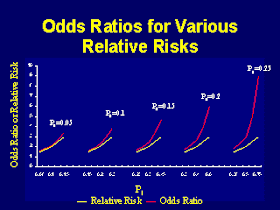



On Biostatistics And Clinical Trials Odds Ratio And Relative Risk




Mnemonics For Usmle Step 1 Pdf Behavioral Science Case Control Or Is In Past Cohort Study Is In Future Relative Risk Or Comes Before Rr Alphabetically Course Hero
Relative Risk, Odds Ratio, Attributable Risk, and Absolute Risk Reduction Relative risk (RR) risk of disease in exposed group/risk of disease in unexposed group = a/(ab) / c/(cd) used in cohort studies or other studies where total population is known;The relative risk is 009 divided by 003, so 3, which means that people who have hypertension have 3 times the risk of having a heart attack in one year compared to people without hypertension The probability of having a heart attack in the past year for people with hypertension is 9 divided by 100, and the result can be written as a decimal Consider this value to be more of a percentage of the total exposed We then divide this value (A/AC) by the number of nonexposed who developed cancer over the total number of nonexposed (B/BD) Therefore Relative Risk = the ratio (A/AC)/ (B/BD) To understand Odds Ratio now, lets go through another but similar example
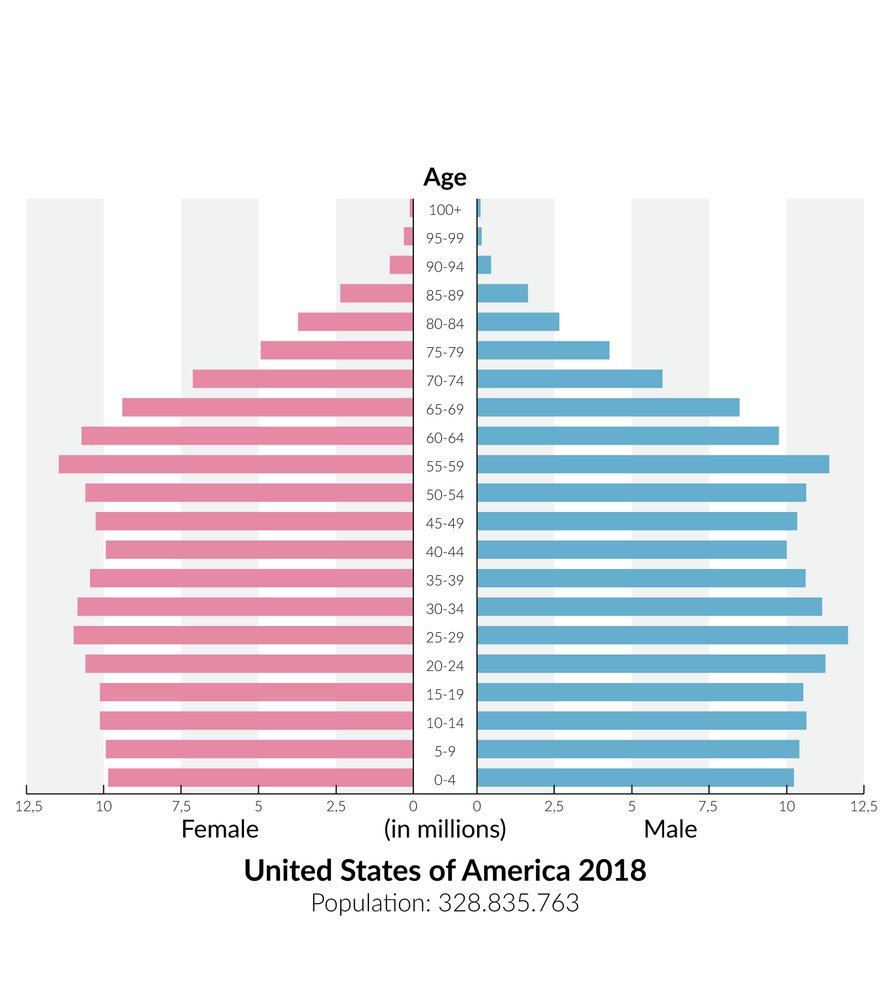



Epidemiology Knowledge Amboss




Definition And Calculation Of Odds Ratio Relative Risk Stomp On Step1
Risk ratio or relative risk = Risk in group A / Risk in group BAn odds ratio of 112 means the odds of having eaten lettuce were 11 times higher among casepatients than controls Because the odds ratio is greater than 10, lettuce might be a risk factor for illness after the luncheon The magnitude of the odds ratioOdds of having disease in expose group / odds of having disease in unexposed group = ad/bc Relative Risk (RR) probability of getting disease in exposed group / probability of getting disease in unexposed group = a/ (ab) / c/ (cd) If RR = 1, there is no association between exposure and outcome Dosereponse




The Relative Risk Odds Ratio And 95 Confidence Interval Comparing Download Scientific Diagram




Usmle Epidemiology And Biostatistics Summary Meta Analysis Grepmed
Both the odds ratio and the relative risk compare the relative likelihood of an event occurring between two groups The relative risk is easier to interpret and is consistent with general intuition Some designs, however, allow only for the calculation of the odds ration Covariate adjustment is easier for an odds ratioUSMLE Step 1 Behavioral Sciences Epidemiology/Biostat FA 12 STUDY PLAY Casecontrol study, observational and retrospective if the 95% CI for odds ratio or relative risk includes 1, H0 is not rejected if CI between 2 groups overlap, then these groups are not significantly different Odds ratio vs relative risk Odds ratios and relative risks are interpreted in much the same way and if and are much less than and then the odds ratio will be almost the same as the relative risk In some sense the relative risk is a more intuitive measure of effect size




52 Usmle Step 1 Biostatistics Ideas Statistics Math Research Methods Data Science




Odds Ratio Osmosis
When the RR is exactly 1, the risk is unchanged For example, a report may state 'The relative risk of blindness in people given drug T was 15' This shows that the drug increased the risk of blindness Another measure that is used is the odds ratio For practical purposes, assume that the odds ratio is the same as the relative riskFor estimates of relative risk ratios, this becomes logarithm Relative risk has two important features, ie Comparison between two exposures, and;




Odds Ratio Osmosis




Relative Risk And Odds Ratio Usmle The Journey
Formulas and concepts that should be memorized to be used on the USMLE Step 1 Learn with flashcards, games, and more — for free95% CI ) compared to nondiabetic patients Which of the following hypothetical studies most likely yielded these results Note that an odds ratio is a good estimate of the risk ratio when the outcome occurs relatively infrequently (



Definition And Calculation Of Odds Ratio Relative Risk Stomp On Step1




How To Interpret And Use A Relative Risk And An Odds Ratio Youtube
RR > 1 exposure is associated with increased risk of disease;Be a patron athttps//wwwpatreoncom/LYMED *Mistake @ 1305 I should say that if you exercise, your chances of getting a MI i When the outcome is not rare in the population, if the odds ratio is used to estimate the relative risk it will overstate the effect of the treatment on the outcome measure The odds ratio will be greater than the relative risk if the relative risk is greater than one and less than the relative risk otherwise
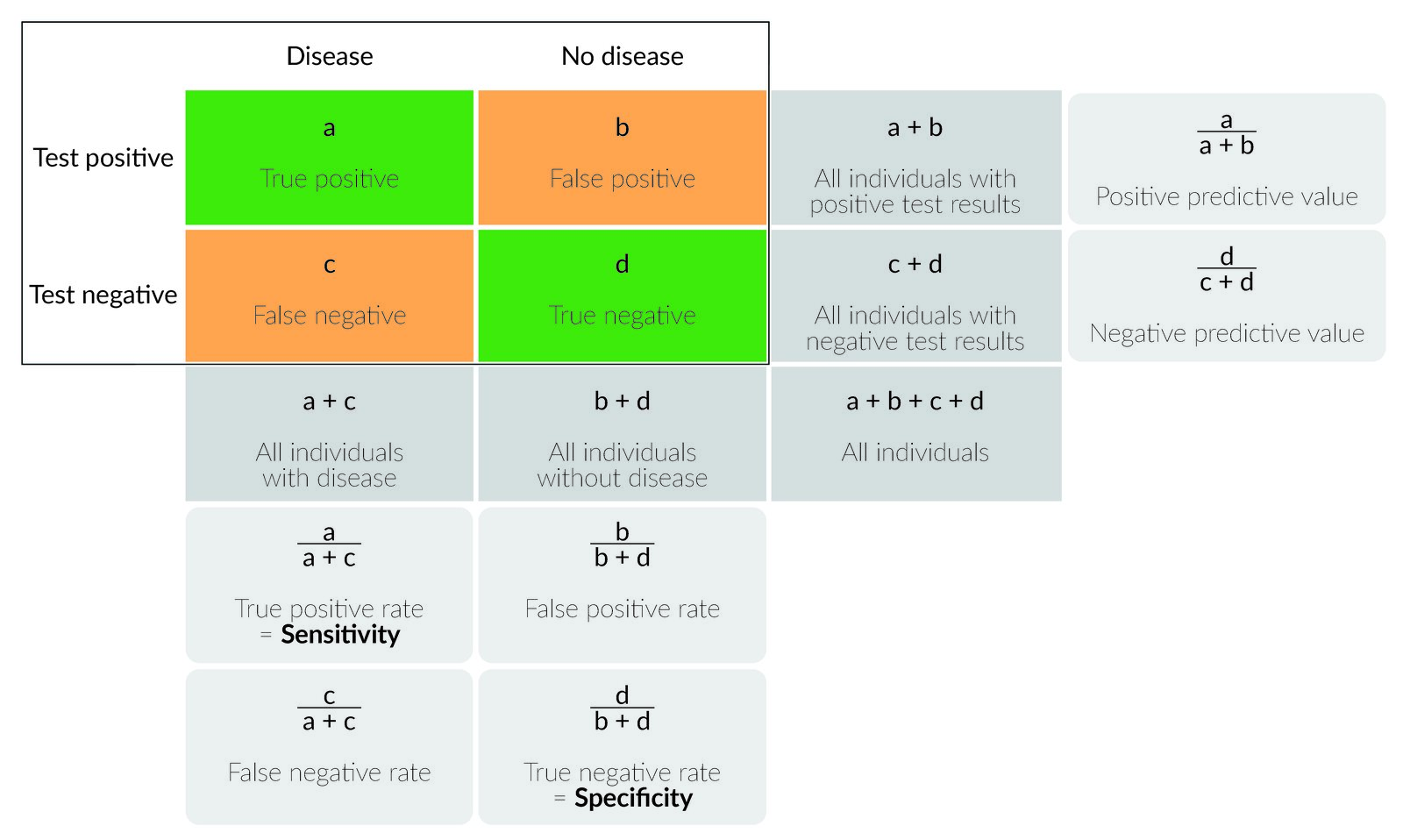



Epidemiology Knowledge Amboss
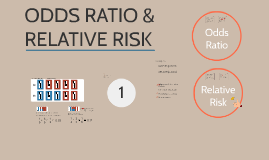



Odds Ratio Relative Risk By Susi Delaney
Proper denominator representing the exposure Relative Risk is quite similar to Odds Ratio, although RR is calculated by the use of percentages, whereas Odds Ratio is calculated by using the ratio of oddsRelative risk and odds ratio The relative risk (also known as risk ratio RR) is the ratio of risk of an event in one group (eg, exposed group) versus the risk of the event in the other group (eg, nonexposed group) When the outcome risk is 01 or less, odds ratios and risk ratios agree well for risk ratio values ranging from 01 to 10 in all 3 figures When cumulative incidence is 10, the odds ratio is within 10% of the risk ratio for risk ratios ranging from 01 to 18 in Figure 1, from 055 to 10 in Figure 2, and from 04 to 25 in Figure 3 When



What Is The Difference Between The Risk Ratio Rr And The Odds Ratio Or Quora




A Beginner S Guide To Interpreting Odds Ratios Confidence Intervals And P Values Students 4 Best Evidence




8 17 Mb Calculating The Risk Ratio Odds Ratio And Risk Difference In A Randomised Controlled Trial Download Lagu Mp3 Gratis Mp3 Dragon
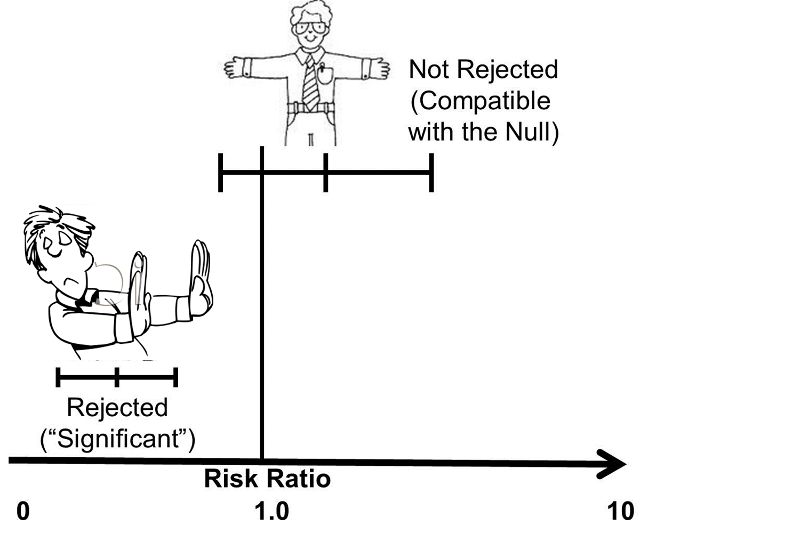



Confidence Intervals And P Values




Measures Of Effect Relative Risks Odds Ratios Risk Difference And Number Needed To Treat Kidney International
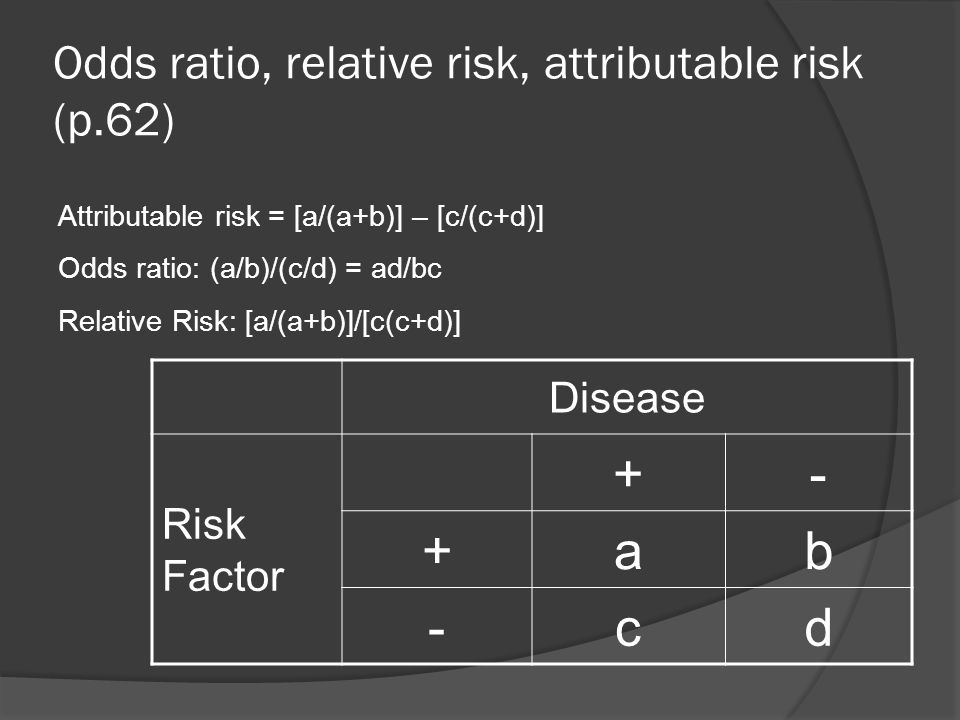



Week 7 Usmle Step 1 Review Biostatistics Behavioral Science And Nutrition Steven Katz Msiv Ppt Download




最新 Odds Ratio Vs Relative Risk Usmle ただの悪魔の画像




Unadjusted Raw Odds Ratios For Risk That Annual Review Of Competence Download Scientific Diagram




Main Points To Be Covered Measures Of Association In Case Control Studies Prevalent Controls Design Odds Ratio Vs Relative Risk And The Rare Disease Ppt Download



Epidemiology Stepwards




Dynamic Lines Measures Of Association N Absolute Risk The Relative Risk And Odds Ratio Provide A Measure Of Risk Compared With A Standard N Attributable Ppt Download




Definition And Calculation Of Odds Ratio Relative Risk Stomp On Step1




最新 Odds Ratio Vs Relative Risk Usmle ただの悪魔の画像




Relative Risk And Odds Ratio




Usmle Biostats 4 2x2 Table Odds Ratio Relative Risk Nnt Nnh And More Youtube



1




Mnemonics For Usmle Step 1 Pdf Behavioral Science Case Control Or Is In Past Cohort Study Is In Future Relative Risk Or Comes Before Rr Alphabetically Course Hero




First Aid Epidemiology Biostatistics Flashcards Quizlet



Epidemiology Stepwards




Mnemonics For Usmle Step 1 Pdf Behavioral Science Case Control Or Is In Past Cohort Study Is In Future Relative Risk Or Comes Before Rr Alphabetically Course Hero




Epidemiology Knowledge Amboss




Divine Intervention Episode 143 Usmle Biostats Review Some



Case Control Study Odds Ratio Relative Risk Best Custom Academic Essay Writing Help Writing Services Uk Online Homeworknowcomlink Web Fc2 Com



Beaumont Cloud Cme Com Launchscorm Aspx Caseid 112 Userid 0 Video True




Odds Ratio Osmosis
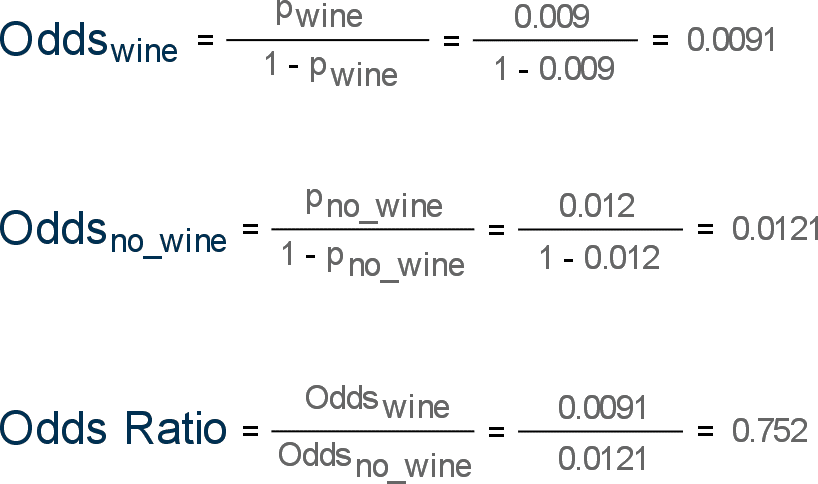



Risk Difference Relative Risk And Odds Ratio Quantifying Health



Q Tbn And9gcs7g3 Oy3gxo7fbk7uvklwexnnbqcmd7m5bqd Ghq64ww9hd4dh Usqp Cau
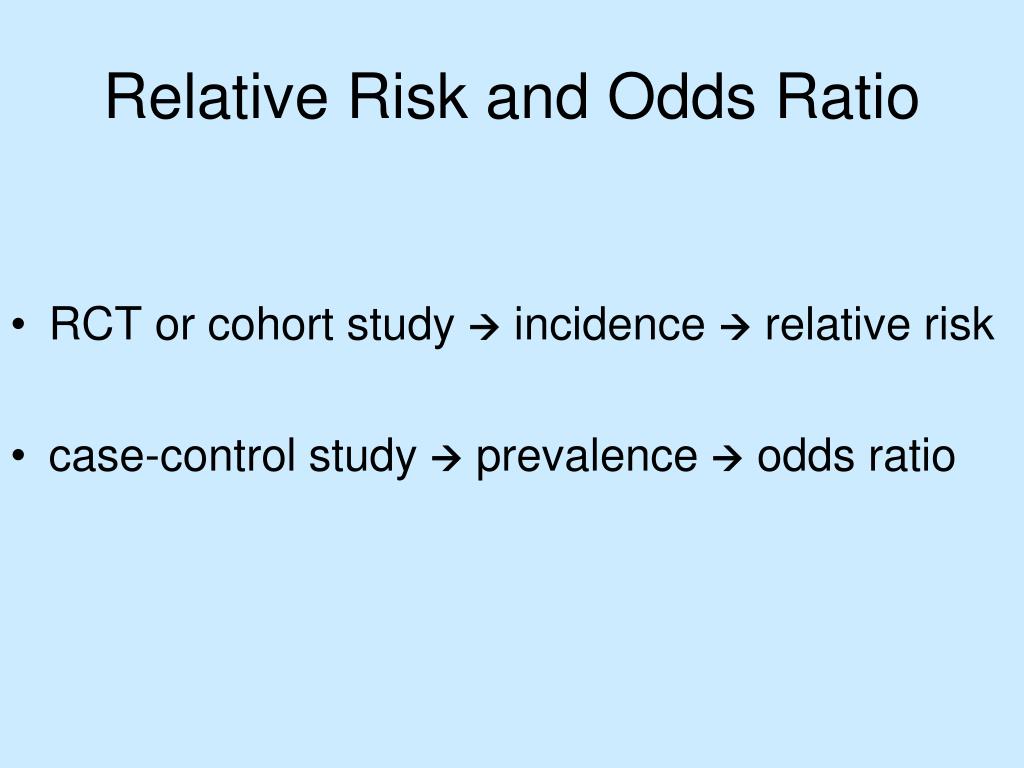



Ppt Preparation For Usmle Step 1 Powerpoint Presentation Free Download Id




最新 Odds Ratio Vs Relative Risk Usmle ただの悪魔の画像




My Notes For Usmle




Attributable Risk And Odds Ratio Online Medical Library




Relative Risks And Odds Ratios Simple Rules On When And How To Use Them Mckenzie European Journal Of Clinical Investigation Wiley Online Library




Relative Risk Vs Odds Ratio On The Backpack And Back Pain Study Massage Fitness Magazine




最新 Odds Ratio Vs Relative Risk Usmle ただの悪魔の画像



最新 Odds Ratio Vs Relative Risk Usmle ただの悪魔の画像



Cdn Mdedge Com Files S3fs Public Document September 17 5302jfp Languageofevidence Pdf




8 17 Mb Calculating The Risk Ratio Odds Ratio And Risk Difference In A Randomised Controlled Trial Download Lagu Mp3 Gratis Mp3 Dragon
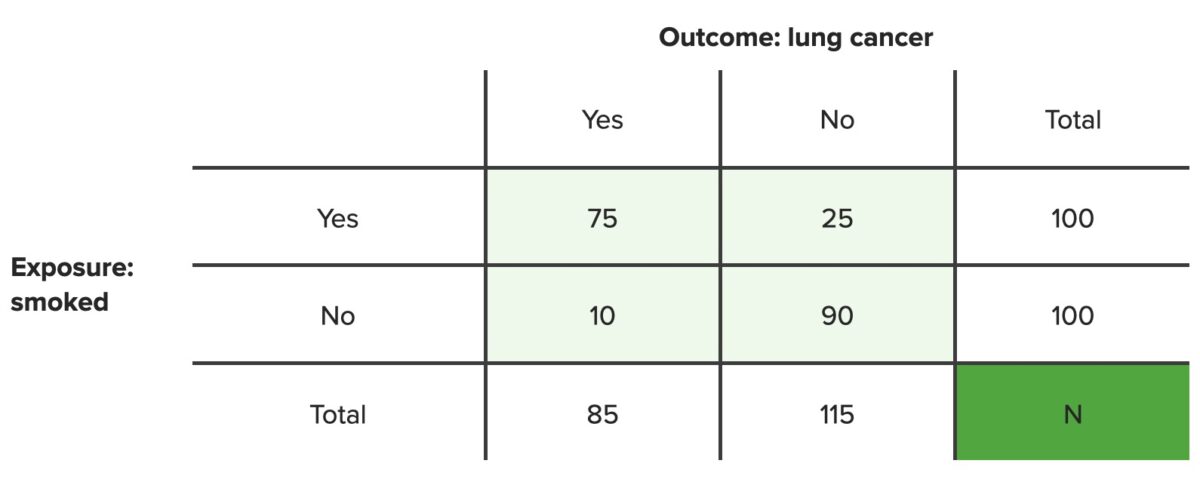



Measures Of Risk Concise Medical Knowledge




Divine Intervention Episode 143 Usmle Biostats Review Some



Relative Risk Reduction Wikipedia




The Difference Between Relative Risk And Odds Ratios The Analysis Factor




最新 Odds Ratio Vs Relative Risk Usmle ただの悪魔の画像




Tutorial About Hazard Ratios Students 4 Best Evidence




Odds Ratio Relative Risk Calculation Definition Probability Odds Youtube




Number Needed To Treat Absolute Risk Reduction Stomp On Step1




Usmle Step 2 Biostatistics Epidemiology Flashcards Quizlet




Epidemiology Odds Ratio Or Bean Around The World




最新 Odds Ratio Vs Relative Risk Usmle ただの悪魔の画像
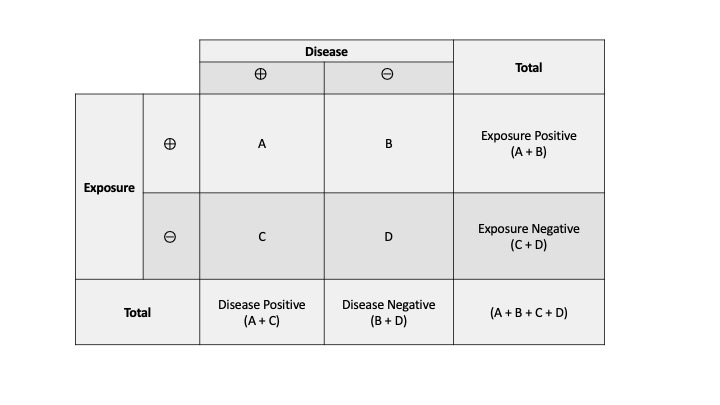



Measures Of Association Stats Medbullets Step 1




Epidemiology Knowledge Amboss



Number Needed To Treat Absolute Risk Reduction Stomp On Step1




Tutorial About Hazard Ratios Students 4 Best Evidence




8 17 Mb Calculating The Risk Ratio Odds Ratio And Risk Difference In A Randomised Controlled Trial Download Lagu Mp3 Gratis Mp3 Dragon




Pdf When To Use The Odds Ratio Or The Relative Risk Semantic Scholar




Odds Ratio Article




Using Odds Ratio In Case Control Studies Youtube



Q Tbn And9gcq5tpzikqe8jiy9iqzxyqcbaqndofe8d2iabvvrkarpadvgvm8o Usqp Cau




Odds Ratio Http Www Slideshare Net Terryshaneyfelt7 What Does An Odds Ratio Or Relative Risk Mean Research Methods Academic Research Statistics Math




Relative Risk Versus Odds Ratio Usmle Biostatistics 4 Youtube



Q Tbn And9gcr Ttka12jaocnx Gn3ox9ci1ggq18vcw9359i6hq2cschyusam Usqp Cau




16 Epidemiology Resources Ideas In 21 Data Science Research Methods Statistics Math



Absolute Risk Vs Relative Risk Vs Odds Ratio Pp Made Easy On Vimeo




Relative Risk And Absolute Risk Definition And Examples Statistics How To




My Notes For Usmle




Relative Risk And Odds Ratio Usmle The Journey




Understanding Systematic Reviews And Meta Analysis Archives Of Disease In Childhood




8 17 Mb Calculating The Risk Ratio Odds Ratio And Risk Difference In A Randomised Controlled Trial Download Lagu Mp3 Gratis Mp3 Dragon




Relative And Absolute Risk Osmosis
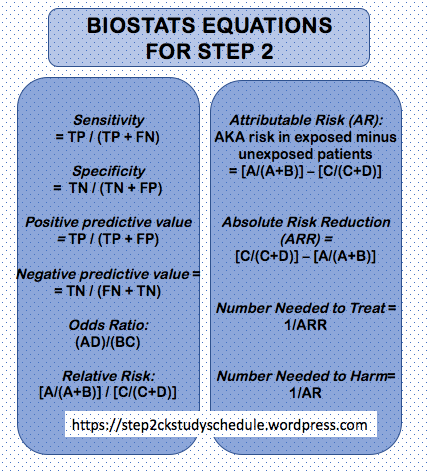



Biostatistics For Step 2 Step 2 Study Guide




8 17 Mb Calculating The Risk Ratio Odds Ratio And Risk Difference In A Randomised Controlled Trial Download Lagu Mp3 Gratis Mp3 Dragon




Relative Risk Odds Ratios Youtube




Usmle Step 1 Behavioral Science




Statistics For Medical Students Geeky Medics
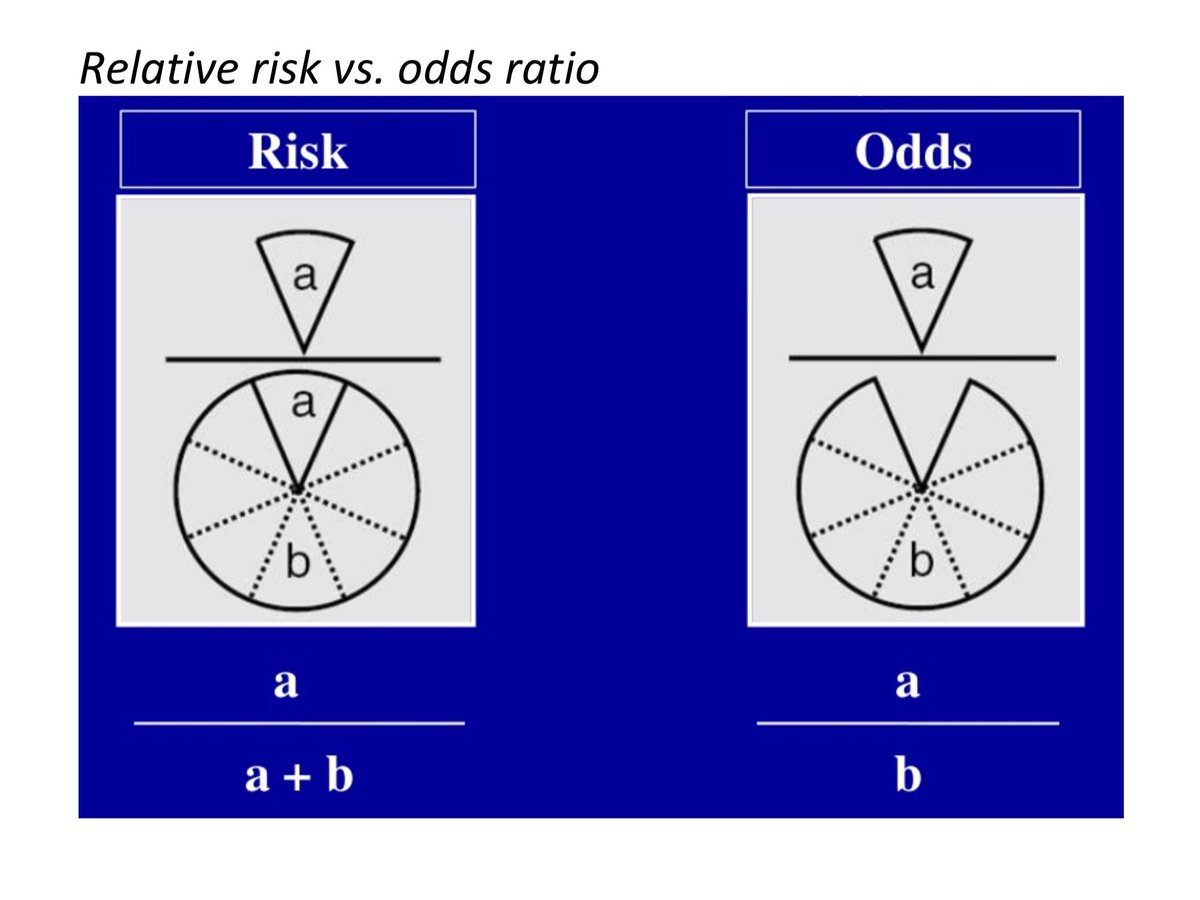



Bryan Carmody For M2s Preparing For Usmle Step 1 Epidemiology Questions Are Free Points You Don T Have To Make 2x2 Tables Or Memorize Formulae From First Aid To Calculate Or




Relative Risk Http Www Slideshare Net Terryshaneyfelt7 What Does An Odds Ratio Or Relative Risk Mean Study Skills Research Methods Study Tips




Biostats Flashcards Quizlet




Cohort And Case Control Research Ppt Video Online Download




A Beginner S Guide To Interpreting Odds Ratios Confidence Intervals And P Values Students 4 Best Evidence


